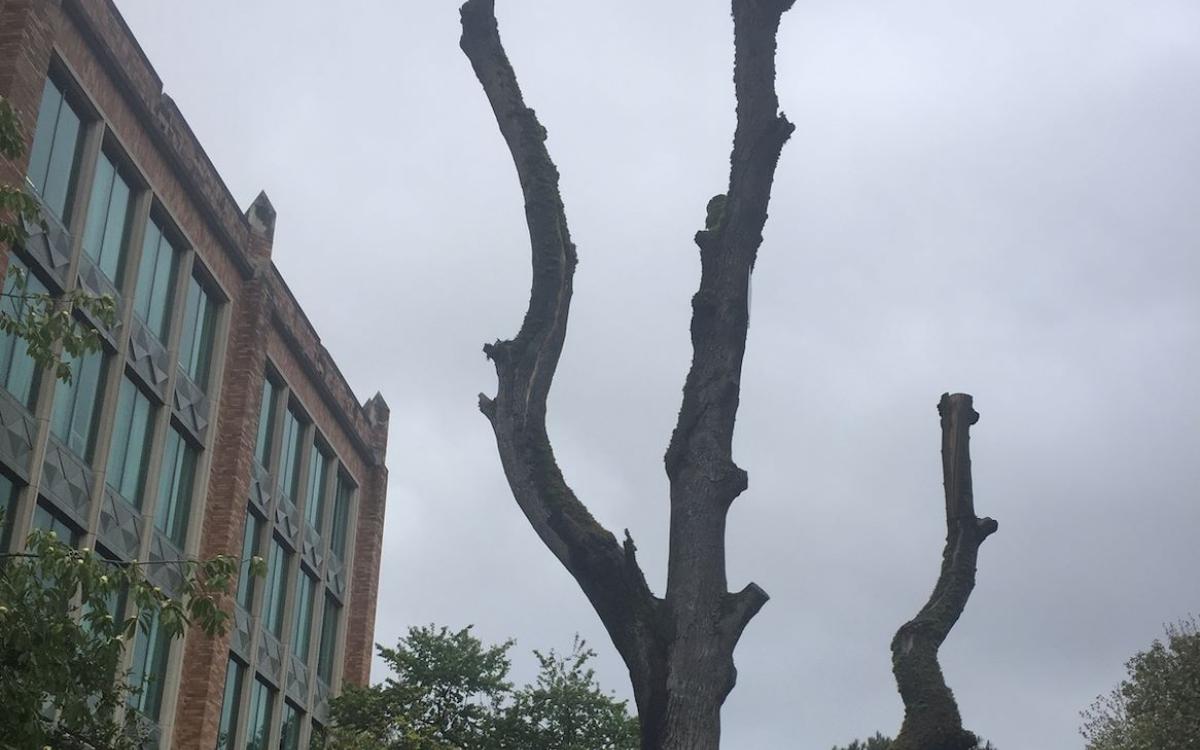At a glance
The University of Washington has been creating more and more snags out of fallen trees in the past year. Adding snags (… Read full summary
- Funding received
- 2018-2019
- Mini
- Awarded
- $1,000
- Funding partners
-
- Services and Activities Fee (SAF)
The University of Washington has been creating more and more snags out of fallen trees in the past year. Adding snags (standing dead trees) to the landscape adds a substantial amount of ecological benefits. Snags (dead wood) provides new life to habitat. They provide food for many wood boring insects and mammals such as ants, beetles, and woodpeckers. The cavities within this dead wood make great nesting habitat and living quarters for woodpeckers, red squirrels and many other species of birds, bats and insects. When a tree dies it has only partially fulfilled its potential ecological function. However, snags can be unsightly to people who do not understand their benefits. We would like to continue this trend of adding snags to the landscape and to change people’s perception about them by adding signage to increase their knowledge of its benefit for society. The signage will all be made out of salvage wood from the salvage wood program.
The University of Washington has been creating more and more snags out of fallen trees in the past year. Grounds Management has added ~15 snags since we hired a new arborist to handle the tree work on campus. Adding snags (standing dead trees) to the landscape adds a substantial amount of ecological benefits. Snags (dead wood) provides new life to habitat. They provide food for many wood boring insects and mammals such as ants, beetles, and woodpeckers. The cavities within this dead wood make great nesting habitat and living quarters for woodpeckers, red squirrels and many other species of birds, bats and insects. When a tree dies it has only partially fulfilled its potential ecological function.
However, snags can be unsightly to people who do not understand their benefits. We would like to continue this trend of adding snags to the landscape and to change people’s perception about them by adding signage to increase their knowledge of its benefit for society. The signage will all be made out of salvage wood from the salvage wood program and will say:
‘When a tree dies it begins its second life as a snag. Snags aka standing dead wood provide habitat for thousands of living organisms such as insects, birds, and small mammals. Snags are a natural part of a forest ecosystem that are rarely available in an urban forests. Grounds Management has implemented a new program to provide habitat snags throughout campus, *this sign was constructed using salvage wood from the salvage wood program and funded by the Campus Sustainability Fund.’
Each sign will cost $100. We will put ten signs in front of some of the most visited snags on campus.’
Thank you for your consideration!
Michael Bradshaw
Michael Bradshaw
Project lead
- mjb34@uw.edu
- Affiliation
- Student
Sara Shores
Team member
- shoress@uw.edu
- Affiliation
- Staff
